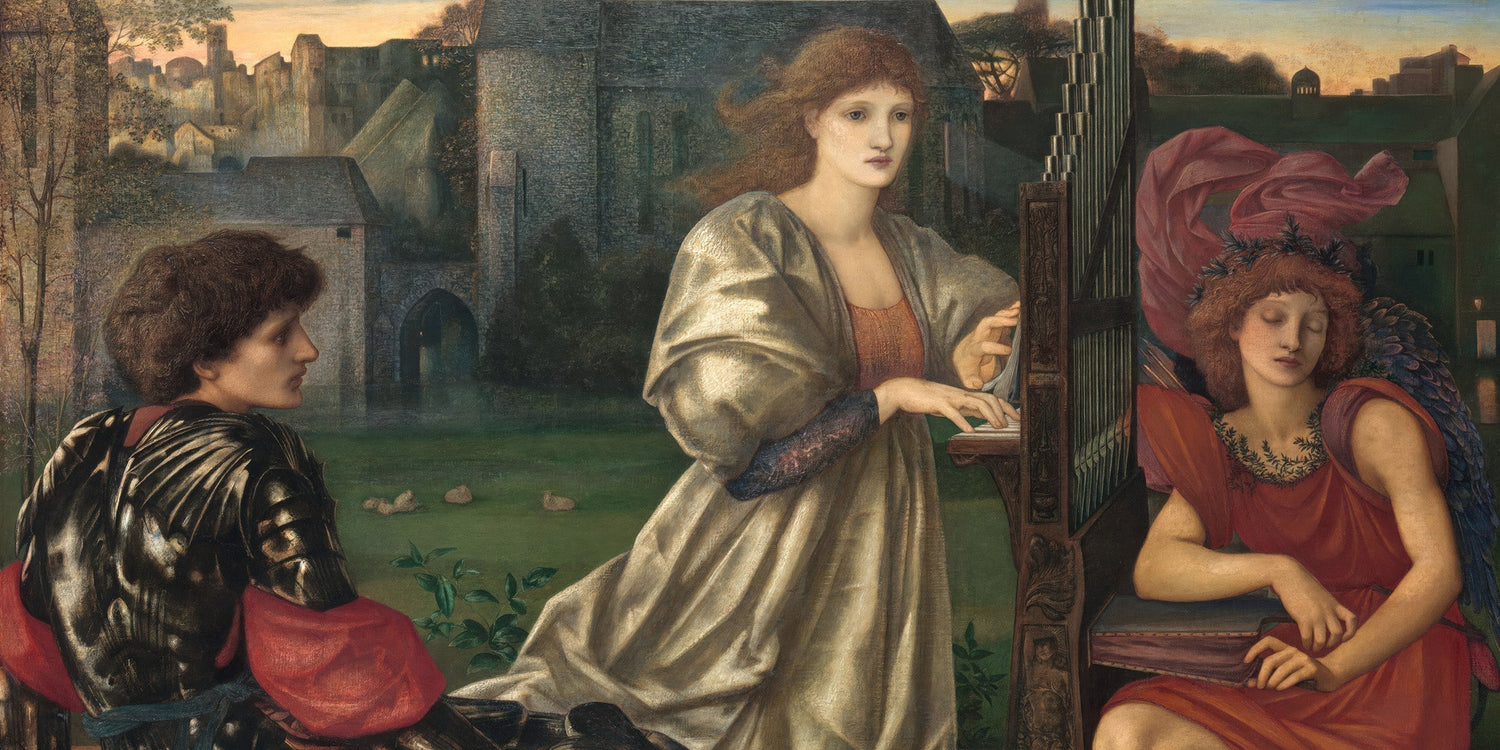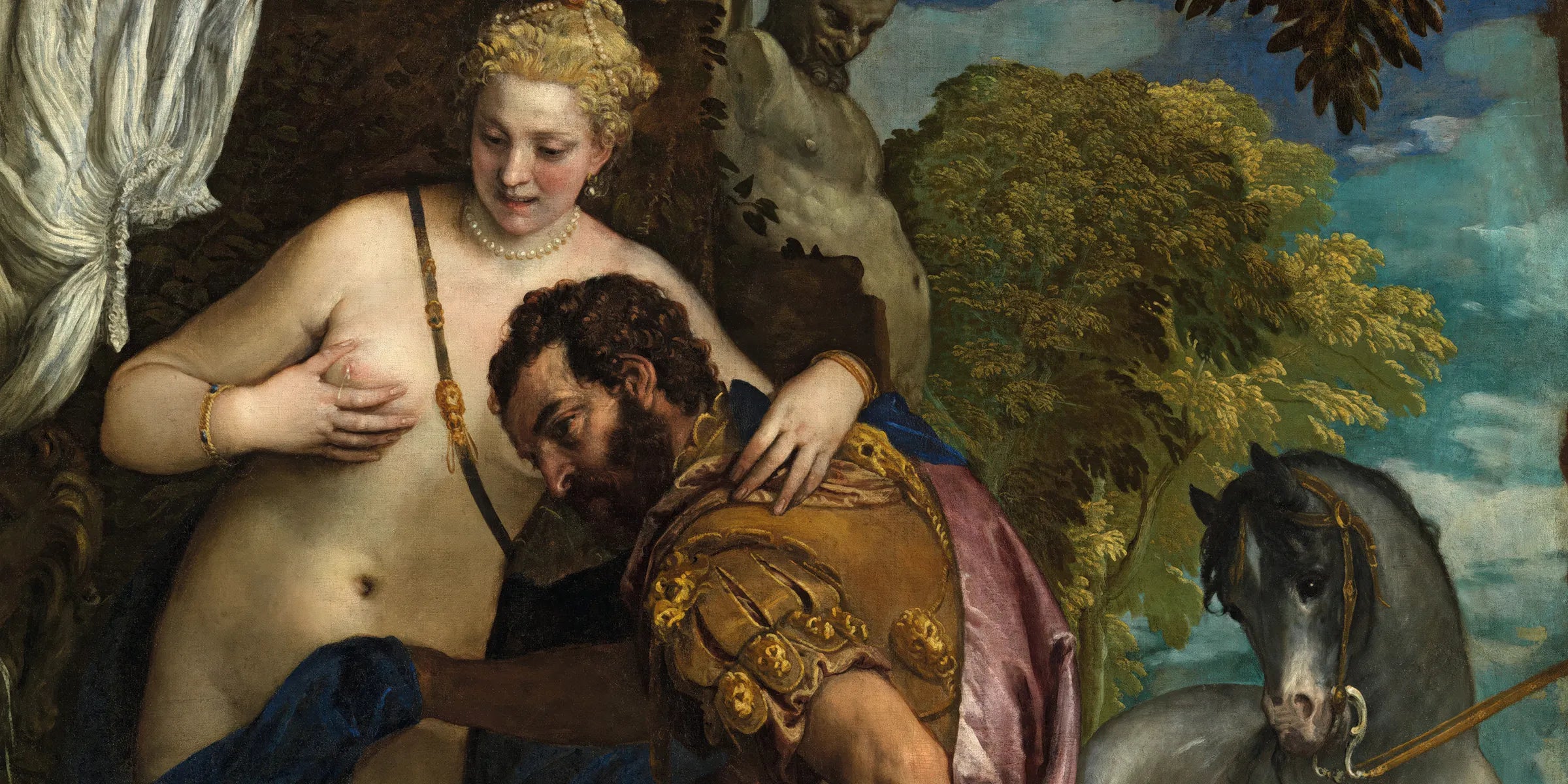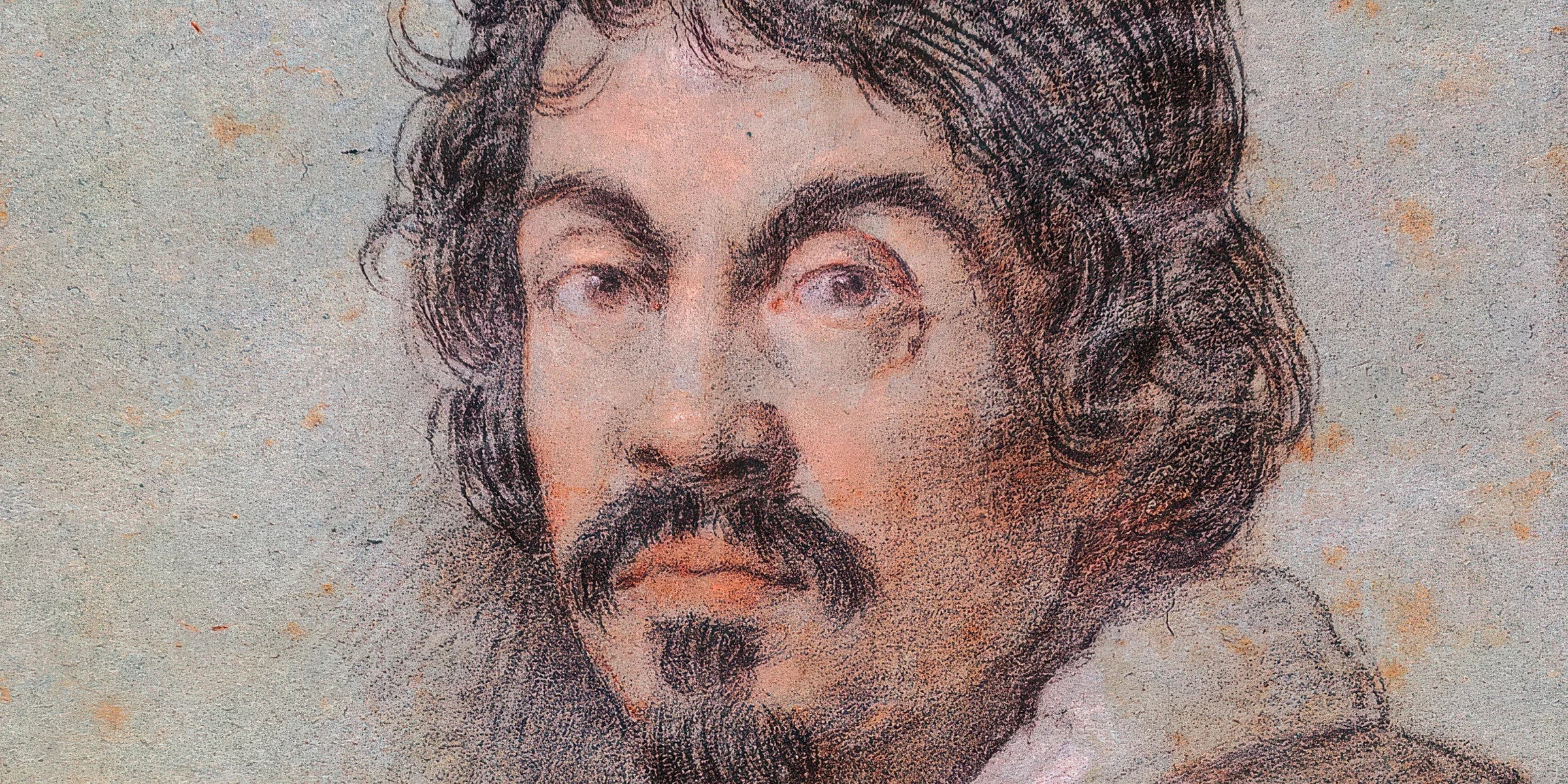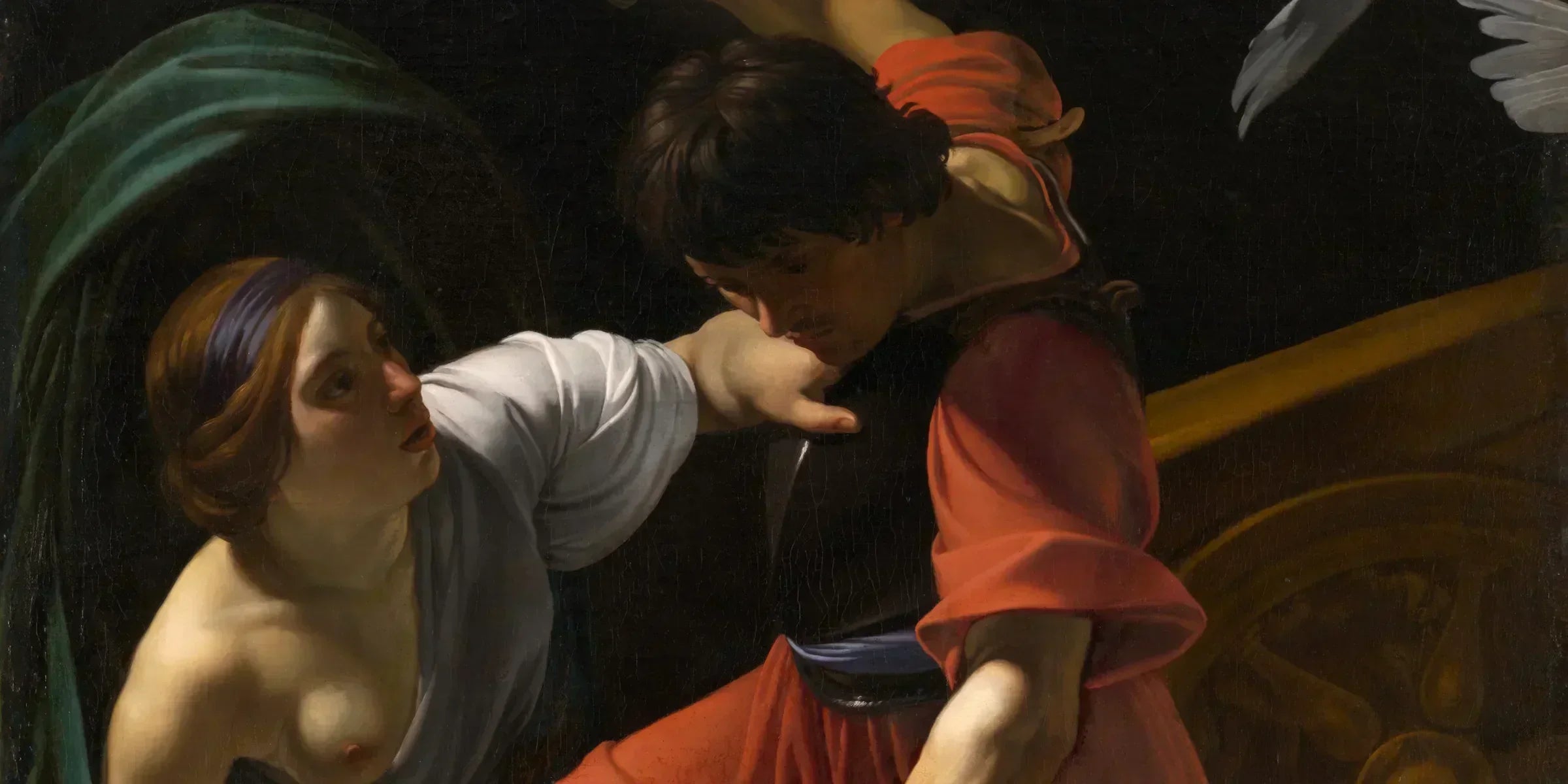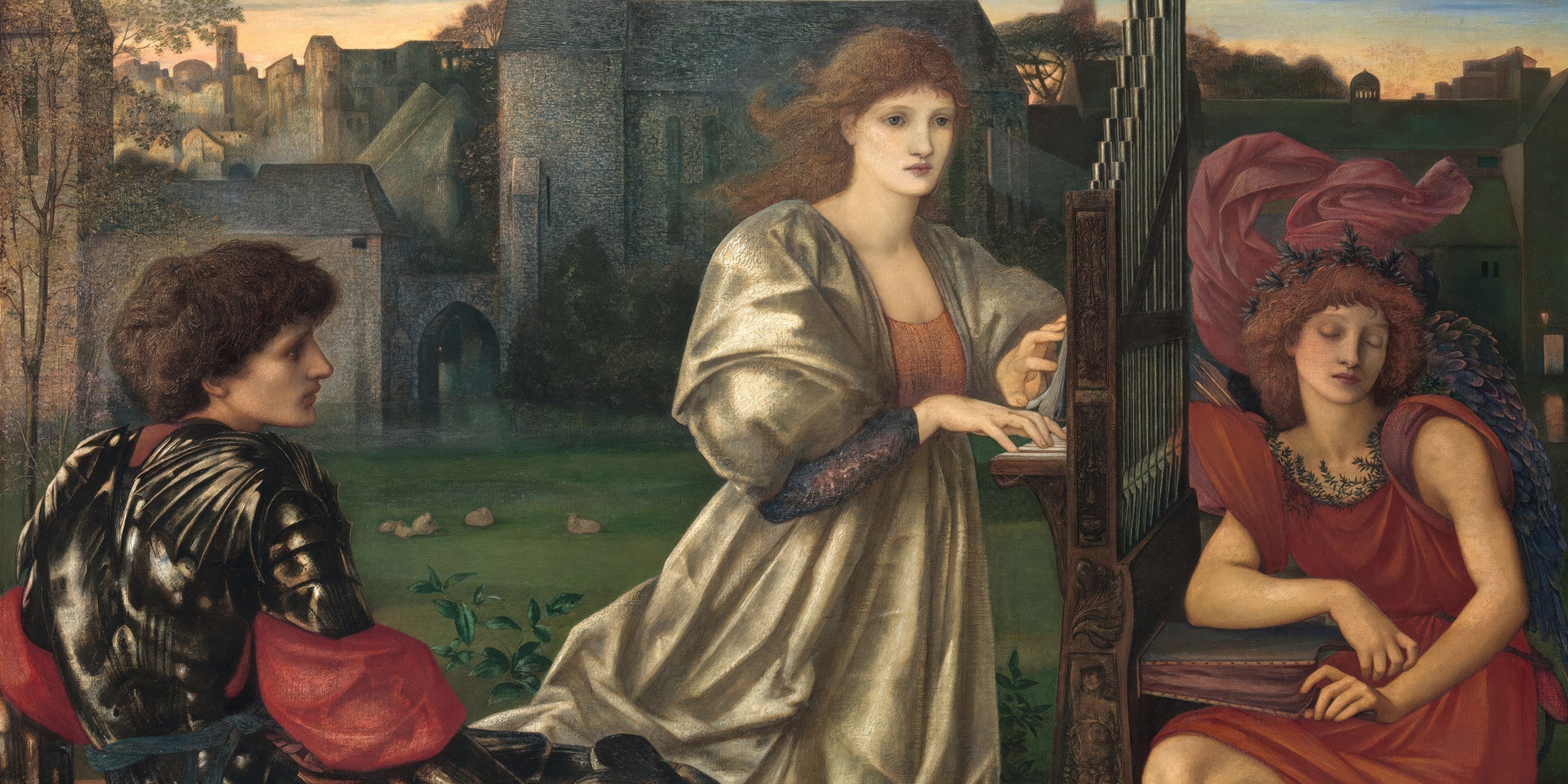When it comes to romanticism in art, few could hold a candle (preferably an ornate, medieval one) to Sir Edward Burne-Jones. His masterpiece The Love Song is a poetic daydream, a visual sonnet that transports us into a world where time moves slower, love is melancholic, and everyone looks suspiciously ethereal. If Burne-Jones had an Instagram account today, it would be filled with wistful, Pre-Raphaelite filters and captions like: "Lost in a reverie. #MedievalAesthetic #Yearning".
The Context: A Pre-Raphaelite Affair
Burne-Jones was a key figure in the Pre-Raphaelite Brotherhood, a movement that rejected the industrialized, soulless world of the 19th century in favor of a romanticized medieval past. Inspired by myths, legends, and enough drapery to make a Renaissance tailor weep with joy, the Pre-Raphaelites aimed to bring back purity and craftsmanship to art.
 The Love Song, painted between 1868-1877, is a prime example of this ethos. Here we see a dreamy trio: a lady in flowing robes plays a portative organ (think of it as a medieval keyboard for hopeless romantics), while a knight, clad in the finest armor fit for brooding, leans in to listen. A third figure—a statuesque maiden—completes the composition, staring into the distance as if contemplating a tragic sonnet, or perhaps just trying to remember where she left her hairpins.
The Love Song, painted between 1868-1877, is a prime example of this ethos. Here we see a dreamy trio: a lady in flowing robes plays a portative organ (think of it as a medieval keyboard for hopeless romantics), while a knight, clad in the finest armor fit for brooding, leans in to listen. A third figure—a statuesque maiden—completes the composition, staring into the distance as if contemplating a tragic sonnet, or perhaps just trying to remember where she left her hairpins.
Technique and Style: The Art of Dreaming
Burne-Jones was a master of composition, creating works that feel almost like scenes from a forgotten legend. The figures in The Love Song seem suspended in an eternal moment, wrapped in rich colors, delicate details, and an almost eerie stillness. The color palette is soft yet vivid, reminiscent of stained glass windows in an ancient cathedral, where every hue tells a story. His brushwork is meticulous, each fold of fabric rendered with the precision of someone who probably spent too much time staring at medieval tapestries.
Fun Facts and a Dash of Humor
-
Burne-Jones was famously detail-obsessed. He once repainted a face 17 times because he wasn’t satisfied—proof that even geniuses struggle with perfectionism (or just had a very patient model).
-
His art was loved by the wealthy elite, including William Graham, a politician and collector who bought The Love Song. Apparently, nothing says “I have exquisite taste” like melancholic medieval figures playing the organ.
-
Oscar Wilde, ever the wit, once commented that Burne-Jones' paintings were like “beautiful things that should never have been said.” A poetic insult? A compliment? With Wilde, one could never be sure.
A Love Song for Your Home
If you’ve ever wanted to bring a sense of wistful romance into your home, The Love Song is the perfect choice. Place it where you can gaze upon it daily and sigh dramatically—preferably while reciting poetry or practicing your best “yearning knight” pose.
Explore our collection and let your home become a stage for medieval enchantment.


